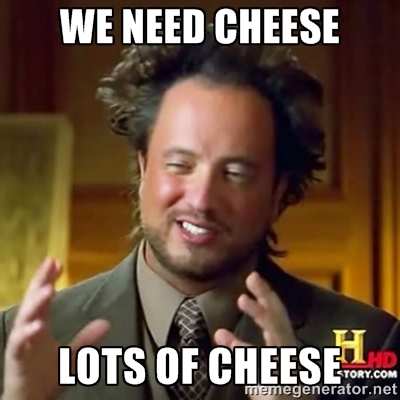Advertisers are on a constant pursuit to keep their audiences engaged and interacting on social media. Unfortunately, more often than not, their methods to garner that attention can be well, pretty lame. Recently, Digiday spoke with several brand executives, one who asked to remain anonymous, to weigh in on why the tacky tactics.
“It’s the price to play today,” said the brand anonymous brand exec. “Two years ago, when Twitter was still not a major player for brands, it was easier to be less gimmicky. Today, it’s more difficult.”

Marketers ask for likes, followers and retweets and to tweet out the most nonsensical, cheesy messages. The most disheartening part is that these seemingly desperate tactics actually work on some users.
The proof is in the pudding (see how bad that was ), recently Domino’s tweeted, “RT if you love pizza. No matter how you slice it.”
This tweet got an impressive 260 retweets.
According to Twitter, promoted tweets that ask for replies increase replies by an average of 334 percent, and promoted tweets with an ask to retweet increase retweets by an average of 311 percent. As difficult as it can be, marketers need to understand that it’s not just about the numbers.
Volvo’s CMO makes the point, “Impressions aren’t everything. The quality of the impact, the story you’re telling, and how impactful it is, deserves more attention than the impressions.”
But it’s difficult for brands to see Twitter in this way when they can just pay to have their tweets and hashtags promoted, or they can tell users to retweet and share. If enough people do, the brand trends – making Twitter more of a place where quantity surpasses quality, keeping brands in the realm of cheesy, mindless, self-promotional robots and not anything close to human. And the cycle continues.
But there’s a real concern to this strategy. Taking the cheese ball route can often reflect the type of audience a brand will acquire.
“Asking fans to like if they agree with something obvious is where some brands are falling short — ‘Like if you love sunlight!’ or ‘Like if you love eating!'” said Matt Wurst, director of digital communities at 360i. “If brands practice this behavior too often, they will appeal to the lowest quality of user. By seeking their engagement and ultimately tapping into their social graph (made up of individuals like them), brands may ultimately grow their pages with the wrong people.”
“It’s a tough line to walk [between human and cheesy],” said the brand exec. “Most brands have a tough time being human, because their job is to mitigate risk and deliver shareholder growth, but both of those are at odds with being human — that means it’s safer and easier to act like a company, not like a person.”
And now, enjoy some tacky tweets:
LOLOLOLOLOL. Not.
Is anyone waiting for that day
This is just gross.
Source: DigidayÂ

